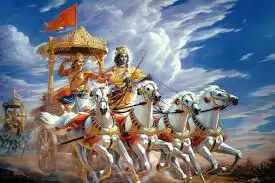Did The Mahabharata War really Happen? Or Is Mythology?

Bharat dynasty records and true historical lineage:
The Mahabharata provides a detailed account of the Bharat dynasty and its lineage, spanning over 50 kings. The mention of such a vast lineage suggests that it may be more than a fictional tale.

It is written as Itihas (History):
The Mahabharata is explicitly referred to as "Itihas," meaning history, rather than a work of fiction or epic. This categorization aligns with the intention of recording historical events.
Modern world's description in ancient times:
The Mahabharata contains descriptions of Kaliyuga (the modern era) that seem to accurately depict some aspects of the present day. These descriptions, although not seen as prophecies, are considered by some as remarkable coincidences.
Archaeological evidence of the lost city of Dwarka:
Marine archaeologists have discovered an ancient submerged city at Dwaraka, Gujarat, which aligns with the descriptions of the city in the Mahabharata. This finding provides some archaeological support for the ancient scriptures.
Real places mentioned in Mahabharata and archaeological evidence:
Over 35 sites in North India have yielded archaeological evidence that matches the descriptions of ancient cities mentioned in the Mahabharata. Artifacts found at these sites correspond to the estimated time period of the events.
Progression from Ramayana:
The events in the Mahabharata continue the dynasties and relationships established in the Ramayana. The coherence between both epics, even in minute details, has led some to believe that they share a common source.
Astronomical references:
Certain astronomical references in the Mahabharata have been interpreted to match specific celestial events. These references provide a basis for dating events mentioned in the epic.
The myth of Aryan invasion theory:
Some proponents argue against the Aryan invasion theory proposed by European scholars, suggesting that it is incompatible with the Sanskrit language and the knowledge contained in ancient texts like the Mahabharata.
Historical references that proved to be correct:
The Maurya, Gupta, and Indo-Greek dynasties mentioned in the Puranas find validation through accounts recorded by Greek historians. This raises questions about the accuracy of ancient Indian historical records predating Greek historians.
Oppenheimer's Quote:
Robert Oppenheimer, the architect of the atomic bomb, made a statement referencing the Bhagavad-Gita after witnessing the first nuclear detonation. While the quote is often misunderstood, it suggests a connection between Oppenheimer's thoughts and the Hindu scripture.

